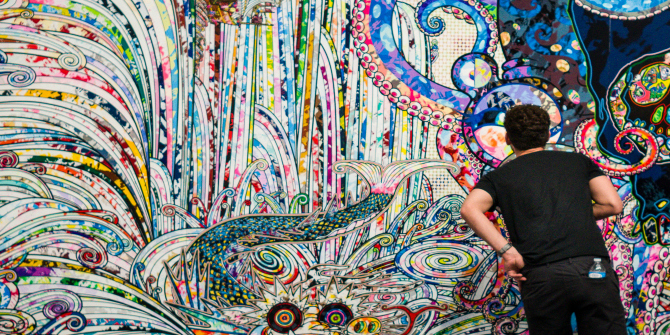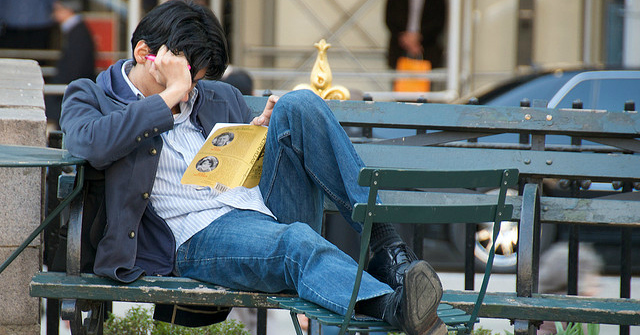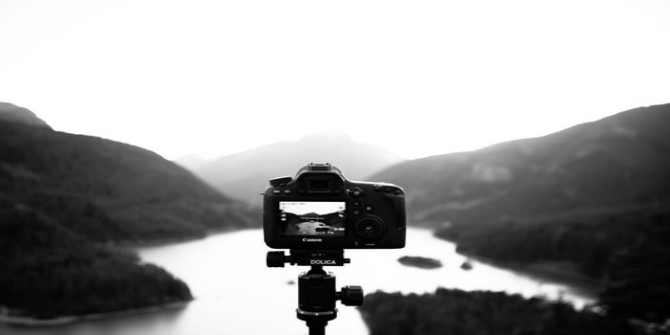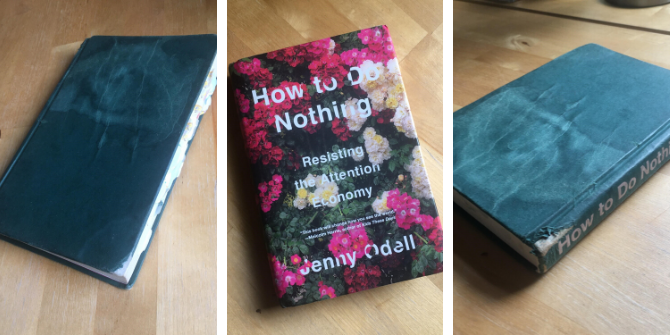In Slow Looking: The Art and Practice of Learning Through Observation, Shari Tishman underscores the importance of slow looking. Using an interdisciplinary lens, this engaging and informative book explores the historical foundations of slow looking, its application in various fields and strategies for educators on how best to implement slow looking in settings where meaningful learning is the priority. The book offers rich insights into the practice of slow looking in diverse contexts and why slow looking matters in everyday life, writes Servet Altan.
Slow Looking: The Art and Practice of Learning Through Observation. Shari Tishman. Routledge. 2018.
People in this modern age rarely slow down and look around them. Cultures place so much value on doing and on progress that the wisdom and equanimity of slowing down to see beyond what one can view immediately is underestimated. Slow looking happens everywhere and can often appear as a passive state from the outside:
It simply means taking time to carefully observe more than the eye can see at first glance. Slow looking happens anywhere people take a generous amount of time to observe the world closely. It is a common practice in everyday life: something we do when we take time to carefully examine an object, a painting in a museum, a family photograph or an insect on the sidewalk (8).
The trend towards slowness may have begun earlier this decade when Daniel Kahneman’s 2011 book Thinking, Fast and Slow became a bestseller, but the act of and need for slow looking runs the history of humanity. In Slow Looking: The Art and Practice of Learning Through Observation, Shari Tishman, lecturer at Harvard Graduate School of Education and a senior research associate at Harvard Project Zero, offers a detailed account of the historical roots for slow looking, strategies of slow looking as well as slow looking practice in journalism, museums and schools.
Tishman takes her reader through early seventieth- to twentieth-century slow looking practices found in the works of influential thinkers and educators such as Comenius, Jean-Jacques Rousseau, Johann Heinrich Pestalozzi, Friedrich Froebel, Louis Agassiz, Kevin Armitage, Anna Botsford Comstock, Liberty Hyde Bailey and John Dewey. The detailed and vivid explanations provided throughout the book are accompanied by illustrations that invite readers to slow down and experience slow looking in their own lives. The book consists of nine chapters, each providing a different angle on why slow looking matters in different contexts. For this review, I focus on three contexts that the book focuses on amongst others: namely, slow looking in journalism, in museums and in schools.
In Chapter Three, Tishman unwinds Paul Salopek’s experiences of Out of Eden Walk as an outstanding example of slow journalism. Salopek, a reporter for National Geographic magazine, set out on a slow and very long walk on 10 January 2013. Salopek’s walk began in Herto Bouri, Ethiopia, with the aim to traverse the pathways of the first humans who migrated out of Africa in the Stone Age. Along his slow journey, according to Salopek himself, he connected with others, unpacked their stories and rediscovered some of his own:
Walking across the Earth, I have relearned the old ceremony of departures and arrivals. (Making and striking campsites, packing and unpacking rucksacks, an antique and comforting ritual.) I have absorbed landscapes through my taste buds, by gleaning farmers’ harvests. And I have reconnected with fellow human beings in ways I could never conceive as a reporter crisscrossing maps by jet and car. Out walking, I constantly meet people. I cannot ignore them or drive by them. I greet them. I chat with strangers five, ten, twenty times a day. I am engaged in a meandering, three-mile-an-hour conversation that spans two hemispheres. In this way walking builds a home everywhere (29).
Walking down a path for several hours may not set the pulse racing for Salopek, but perhaps slowing the pulse is the whole point. Salopek’s project includes inspiring stories for why slow looking matters and how it helps him to explore his own world and connect with others.
In Chapter Five, Tishman highlights the vast opportunities museums present for practising slow looking. Looking for oneself is an innate knowledge-seeking behaviour, and museums provide stimuli which may provoke this as well as looking for museum objects. Today’s museums are shaped around the idea of wunderkammer (meaning a cabinet of curiosities, a cabinet of wonders or a wonder room, 73) and stimulate the human impulse to curiously look for objects and reinforce responses to a work of art displayed. Whether for adults or young learners, museums are springboards for inquisitive and focused minds. Tishman encourages her readers to visit a museum to experience prolonged observation and look for patterns of thinking for oneself and of museum objects.
In Chapter Six, Tishman showcases the commonalities and differences between museums and schools, and why slow looking matters for inquiry in education. While museums offer rich contexts for viewers to follow an unorganised pattern to serve their curiosity, schools mostly provide an organised pattern of instruction to learn effectively. Slow looking lays the foundation for critical thinking and scientific inquiry as it demands that we explore what is at hand in detail and from different perspectives; ironically, however, it appears that slow looking may have been overlooked as a value in general education. Tishman criticises the lack of focus on slow looking in contemporary Western education as it mostly seeks to nurture the fast and deliberative mind. Like museums, she argues that schools should place more emphasis on providing the environment and resources for experiential learning. These opportunities can include, but are not limited to, the experiential study of nature, such as planting a seed and watching it grow, observing the lifecycle of a butterfly, etc.
A key (and promising) premise that the book holds for us all is that slow looking is not a fixed entity. Rather it is a learned capacity and an epistemic virtue, a skill and a disposition that can be developed over time. Tishman asserts that there is no magic recipe for slow looking. She defines prolonged and mindful observation as essential ingredients for slow looking. The book ends with a call to humanity: the more we (choose to) look, the more we can see in this fast-forward world.
Note: This review gives the views of the author, and not the position of the LSE Review of Books blog, or of the London School of Economics.
Image Credit: (Phil Roeder CC BY 2.0).


 Find this book:
Find this book: 





